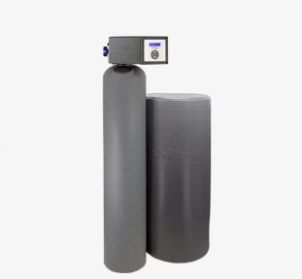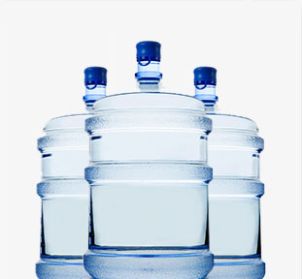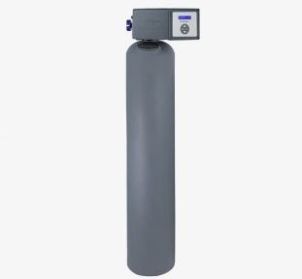
Well Water Treatment: What You Need to Know

While municipal water serves most American households, private wells are still quite common, especially for households in lower-density areas. In the United States, about 40 million people rely on domestic wells for their drinking water, according to the United States Geological Survey. About 3 million Canadian residents also use private wells, according to a Canadian government website.
A variety of issues and contaminants can impact the ground water that supplies wells, so well water treatment through filtration and softening systems is often required. In fact, according to a recent survey from the Water Quality Association (WQA), 53% of well water users said that filtration systems were a necessity for them, not a luxury. Careful observation, frequent testing and regular treatment are the best approach for ensuring water safety and softness.
Take a look below to learn how to spot some frequently occurring well water problems and discover how you can respond to these issues.
Common Well Water Issues
Observation is the first step to discovering potential problems in your well water. Signs you may spot include:
- Scaling, soap scum and spotting: Hard water is common in wells, and it can lead to scaling or lingering soap scum on faucets, drains, showers and tubs, as well as leaving dishes spotty after washing
- Stains in sinks and tubs: Rust or reddish-orange stains can be a sign of iron in your well water; you may also see brown, black or blue-green stains indicating other issues
- Strange tastes or smells: Also evidence of water problems, these challenges can make it unappealing to drink or cook with your water and make showering and bathing unpleasant
- A dry scalp or skin after showering: Along with problems like dull hair, these can be signs of hard water, which can also cause damage to plumbing fixtures and water-using appliances
- Cloudy or discolored appearance: This is a sign of a water problem and can have multiple causes, such as sediment, turbidity (issues with clarity) or suspended solids
These issues can also emerge in municipal water, but private wells are not regulated as public water systems are, as U.S. Environmental Protection Agency rules governing public drinking water systems do not apply to individual water systems. Private well owners are responsible for the quality of their water and as such, are encouraged to test their water regularly and be on the lookout for indicators that there may be a problem.
In addition to these signs, it’s important to note that potential problems may be unobservable. Not all issues can be seen, tasted or smelled, which means that testing, even when nothing seems amiss, is still vitally important.
How To Test Your Well Water
Test h4
Seepage of contaminants from nearby pollution sources can periodically affect groundwater, impacting safety for well water users. Contaminants like arsenic can’t even be observed without testing.
For this reason, the Centers for Disease Control and Prevention recommends that water testing take place annually, as well as whenever you notice taste, appearance or hardness differences. You should also test the well water if you have reason to suspect that there could be problems with your water supply, such as after some natural disasters. It’s also a good idea to conduct a test after well system maintenance or replacements take place.
There are a couple of options for testing well water, based on your needs:
Simple At-Home Testing
Free in-home water tests can test for levels of hardness, chlorine, total dissolved solids (TDS), pH, nitrates, iron and more.
More Comprehensive Lab-Based Testing
By sending a water sample back to the lab for a more complete analysis, your local water expert can help you detect other potential culprits behind any issues you may be experiencing with your well water. Testing conducted at Culligan’s IL EPA-Certified lab can identify lead, hydrogen sulfide, arsenic, copper, bacteria and other contaminants.
Softening and Filtration: Well Water Treatment Options
Depending on what you observe, as well as your testing results, an expert can help you identify different well water treatment systems that can address your concerns. Water filtration systems, water softeners or a combination of the two could enhance the taste and softness of your water and improve its safety.
Water Softening
Hard water can affect the performance of water-using appliances in your house, like your dishwasher or laundry machine. In addition, without soft water, you may notice buildup around drains and faucets and notice that your hair and your skin feel dry after showering. Water softeners help remove the minerals that cause hardness, like calcium and magnesium, to improve your water supply.
Softeners typically use salt, but salt-free conditioners are available for users in brine-restricted areas.
Water Filtration
Water filtration systems improve the quality of water throughout your home for hydration, cooking and bathing.
By filtering out many contaminants, such as iron, sulfur and sediment, you can enjoy great-tasting (and better-smelling) water while also reducing the potential for rust stains and other unsightly household problems. This can also protect your clothing, water-using appliances and plumbing fixtures from damage.
Many people who use well water find that they benefit from using both water filtration systems and water softeners. An expert can help you determine whether separate systems or a combined solution is the right way to improve your water. You might consider one or both of the following types of filtration systems:
- Whole home: These solutions improve water cleanliness for all faucets in your house, addressing issues like staining, smells and sediment. By filtering water at its point of entry to your home, you’ll benefit from cleaner water no matter where, or how, it’s used throughout the home.
- Drinking water: Drinking water filtration systems, some of which include under-sink options, provide cleaner, better-tasting water from the point of use (in other words, individual sinks). These may use reverse osmosis or other methods to filter out total dissolved solids, lead, arsenic, and other contaminants that may be in your water.
Learn more about the well water treatment options available to you today.
Find A Location Near Me

Schedule Your Free
In-Home Water Test
Get better water in your home by scheduling an appointment with your local Culligan Water Expert.
Discover More
See All Articles

Can Drinking Water Prevent Flu Symptoms?
Although drinking water is an important part of staying healthy, H2O alone may not be enough to prevent flu symptoms. Instead, it helps your body perform key functions, which boosts […]
6 min read

Explore

Explore
Our Products

Water Softeners
With any of our soft water systems, get more out of your water-using appliances while spending less on energy and detergent.
View Products

Water Delivery
There’s never been a better time to enjoy the convenience of scheduled bottled water deliveries from the Culligan® Water Experts
View Products

Water Filtration Systems
Culligan's water filtration systems have improved water quality for thousands of families worldwide.
View Products
